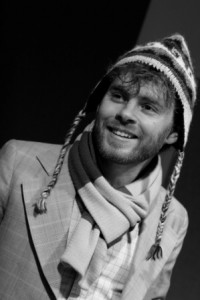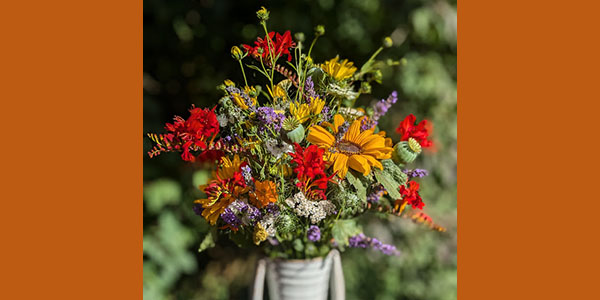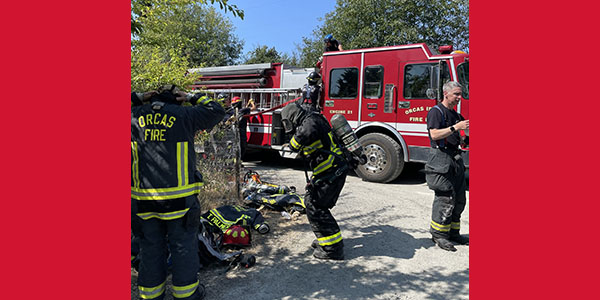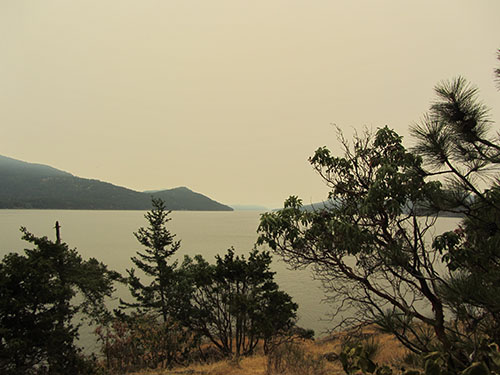
Gabriel Kahane, Composer-in-Residence, will perform "For the Union Dead" at the "Happy Birthday Mendelssohn" concerts
Updated Aug. 21 at 11 A.m.
(Quotes in this article are from Jeff O’Kelly’s notes in the OICMF Festival brochure, unless otherwise noted.)
The second series of Orcas Island Chamber Music Festival (OICMF) concerts celebrates the 200th anniversary of the birth of prodigy Felix Mendelssohn with his Piano Trio in D minor and Song Without Words.
In keeping with the spirit of Mendelssohn’s precocity (he wrote the OICMF favorite, Octet for Strings in E-flat Major, Op. 20, when he was just 18), the Festival’s Artistic Director Aloysia Friedmann has prominently featured the artistry of young musicians (many still in their 20s) at this year’s concerts.
The “Happy Birthday Mendelssohn” concerts, on Friday, Aug. 21 and Saturday, Aug. 22, spotlight a new work by OICMF composer-in-resident Gabriel Kahane: For the Union Dead, set to the poetry of Robert Lowell.
Kahane’s For the Union Dead song cycle will have its West Coast Premiere at the Orcas Island Festival. He will play piano and banjo, and sing during the nine-piece work, accompanied by:
- Rob Moose, violin/electric guitar
- Aloysia Friedmann, viola
- Alisa Weilerstein, cello
- Wendy Wilhelmi, flute/piccolo
- Owen Kotler, clarinet/bass clarinet
- C.J. Camerieri, trumpet
Kahane wrote in the Festival program: “There is now a generation of musicians living and working in New York who make no hierarchical distinctions between their engagement with the spheres of classical music and so-called indie rock or other vernacular musics.” Kahane goes on to describe this generation’s music as “yMusic.”
After discovering poet Robert Lowell’s work in a Los Angeles bookshop nearly two years ago, Kahane says, “ I was struck at once by his effortless movement between past and present, memory and experience in the here and now.
“A few months later, dining with my friends Rob Moose and C.J. Camerieri, the instrumentation and general aesthetic properties of this work came into focus as they described to me a new ensemble that they intended to put together.
“For the Union Dead, written with six specific and genre-defying players in mind, serves as an exploration of and response to the mission statement that yMusic has put forward.”
Kahane describes his process of composition of Union Dead: “The primary challenge with setting much of Lowell’s poetry lies in the idiosyncratic nature of his prosody. … An investigation of the internal logic of his formal devices has led me to the settings heard in this work, the joys and frustrations of setting his texts inextricably linked.
“Is it a coincidence that the three poems in the cycle, which do rhyme, are the only ones not preoccupied with history, with the past? Finally, the last and title poem is in some sense a reflection on race, a century after the American Civil War. It seems fitting then, some forty years after the publication of For the Union Dead and with the election of the first African- American president still fresh in our memory, to throw into relief the narrative of social progress and continued challenges.”
Dvořák’s Terzetto in C Major for Two Violins and Viola, Op. 74 was composed for Josef Kruis, a chemistry student and amateur violinist who lived for a time in the same house as Dvořák. It will be performed by:
- Andrés Cárdenes, violin
- Monique Mead, violin
- Aloysia Friedmann, viola
The Terzetto’s “modest instrumentation and proportions contrast effectively with its rich scoring which never sounds thin, and where the absence of a true bass instrument does not preclude a full sonority.
“The lyrical main theme is followed by a more agitated transitional passage before the main theme returns… The next movement, an E Major Larghetto flows in steady eighth-notes and has something of the character of a folk song… The central section is in the same tempo…but has added rhythmic drive.
“The Scherzo begins with one of Dvořák’s furiants featuring lively rhythms and frequent contrasts between major and minor keys. … The finale begins with an Adagio theme that hovers between C Major and Minor. The variations are not discrete; rather, each grows out of its predecessor with the last bar of each also serving as the first bar of the next. “
Felix Mendelssohn, like Mozart, showed remarkable early musical ability. However, Mendelssohn’s father discouraged his pursuit of a musical career until he was of a later age. Because of the basic conservative nature of his music, Mendelssohn’s many concerti, oratio, symphonies, piano and chamber music was somewhat unappreciated until the later 20th century.
Mendelssohn’s Trio No. 1 in D minor for Violin, Cello and Piano, Op. 49 will be played by
- Chee-Yun, violin
- Anne Martindale Williams, cello
- Jeffrey Kahane, piano
“In the first 30 (or so) years of the nineteenth century, composers … sought new modes of expression: a musical reflection of the burgeoning Romantic ethos in literature which was in turn largely inspired by the work of Goethe (1749–1832). Where Haydn and Mozart were writing music for a specific societal class and Beethoven for all humanity, the next generation was writing music for (and about) the individual.
“The solutions they found … all retained aspects of classical structure while developing new textures, a greater degree of rhythmic complexity and above all an expanded harmonic vocabulary.
“The first movement of Mendelssohn’s D minor piano trio is full of surging power, heard at the outset in the piano’s pulsating chords. The stringed instruments carry most of the thematic material of the movement with the piano providing harmonic underpinning in the form of brilliant
broken-chord figurations…
“Of particular note is the soaring second theme first heard on the cello. …
“Mendelssohn had an unparalleled skill at writing brilliant, playful scherzos of which the present one is a superb example. … The principal theme of the Finale is presented in solid chords by the piano, a device which anticipates some of Brahms’ jollier finales. The stormy mood yields to sunny D Major just before the movement ends. The instrumental writing is again highly virtuosic.”
Mendelssohn’s second piece in the anniversary concerts will be Song Without Words for Cello and Piano in D Major, Op. 109 and will feature:
- Anne Martindale Williams, cello
- Jeffrey Kahane, piano
“As the Romantic period in European music began to take hold (around 1820), the ‘big’ classical structures, such as the symphony and sonata, remained the first choice for expressing ‘deep thoughts.’ Alongside them though, shorter forms — which can be generically named ‘character pieces’ — began to gain in popularity.
“At the same time, the Lied, or German ‘art song’ was on the rise with those by Schubert taking pride of place. It was inevitable that someone would try the experiment of writing instrumental pieces with the melodic characteristics of Lieder (the plural form of Lied) and Mendelssohn — with his gift for writing highly idiomatic music for both instruments and voice — was the right man for the job.
“He composed a large number of Songs Without Words for the piano, but only this single work for a solo instrument with piano accompaniment. It is one of his last compositions and was published after his death.
“The form is a simple “ABA” structure. The outer sections have an elegant melody suggesting a serenade with guitar accompaniment. The D minor central section is slightly more agitated and passionate. Particularly attractive are the transitions back to the opening theme and the gentle coda. The lovable spirit of Schubert — for whom melody was as natural a mode of expression as speech — hovers over the entire piece.”
In keeping with this season’s opening composition being a “feline or canine tribute,” Owen Kotler on clarinet and Jeffrey Kahane on piano will perform George Gershwin’s Walking the Dog at the programs’ opening. “Also known as Promenade, this piece was written for a scene in the 1937 film Shall We Dance in which the stars, Fred Astaire and Ginger Rogers, are seen walking their dogs onboard an ocean liner.”
The e “Happy Birthday Mendelssohn” concert
The “Happy Birthday Mendelssohn” concert series will take place Friday, August 21 at 7:30 p.m. It is sponsored by Phyllis and Bob Henigson. Rachel Adams is sponsor of the reception following the concert.
The Pre-Concert Talk by Adam Stern at 6:30 p.m. is sponsored by Birch and Galen Burghardt.
On Saturday afternoon, August 22, the concert will begin at 5 p.m. The Concert is sponsored by Ann Graves; the post-concert reception is sponsored by Karen and Lee Hedge, and the Post-Concert Interview by Adam Stern with Gabriel Kahane and Guests is sponsored by Carolyn and Bob Volk.
Tickets for all OICMF events continue to be available through waiting lists, which are re-established two to three hours prior to each concert. “Though ticket-seekers may still be disappointed, we have very productive wait lists,” says OICMF Executive Director Victoria Parker.”






